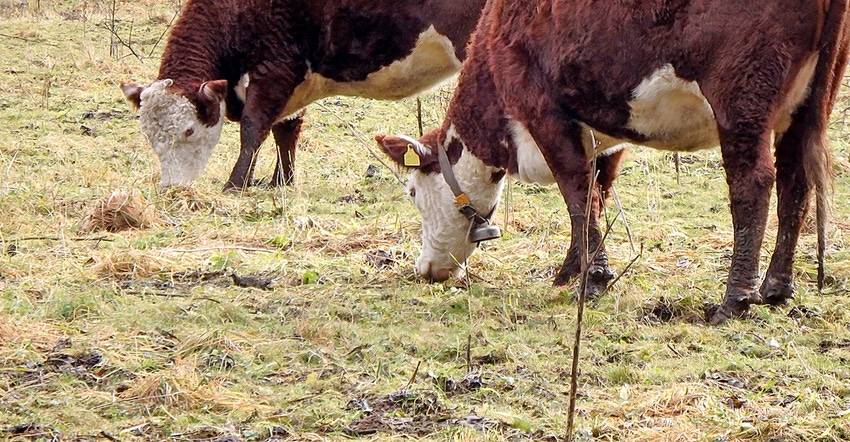December 26, 2017

By Duane Dailey
New forage research gives reason to not graze toxic fescue grass too short. The bottom 2 inches of infected grass holds highest levels of the alkaloid, causing problems for grazing livestock.
The findings guide ways to manage fescue’s toxic impact, says Craig Roberts, University of Missouri Extension forage specialist.
The message for herd owners: Don’t allow cows to grub fescue pastures into the ground.
Sarah Kenyon is reporting her study findings in a Ph.D. dissertation accepted at the University of Missouri this year. The results will be published in Crop Science, a scientific journal.
Research reveals problems
Kenyon, an MU Extension agronomist at West Plains, Mo., took grass samples twice per growing season for three years. The first was in April, prior to boot stage (seed set); the second was in October, prior to frost.
Previous research showed the plants are most toxic after seed set. She found that the most toxic portion is the bottom 2 inches. At seed set, the plant is toxic — just not as toxic or edible.
Her findings are new, Roberts says. This will be a great help in pasture grazing management.
For her study, Kenyon tested fescue owned by Tom Roberts of Alton, Mo., a cow-calf producer. Roberts’ fescue is grazed and cut for hay.
In her studies, Kenyon cut fescue tillers into 2-inch segments from root crown to top. Each layer was analyzed separately by Nick Hill of Agrinostics Ltd., a lab in Watkinsville, Ga.
Farmers, over the years, have developed ways to prevent poisoning. They learned that seed heads and stems were high in toxin. Grazing before seed set or clipping heads reduced toxicosis.
Now, farmers will know not to graze down to the root crown, Kenyon says. Leaving a 3-inch stubble reduces problems.
“This research can be used immediately by Missouri farmers,” Roberts says. “It will be taught at MU grazing schools.”
Toxic situation
The toxic alkaloid, an ergovaline, is found in Kentucky 31 fescue, the most-used grass in Missouri pastures. For years, farmers knew of problems caused by toxicosis. The most serious symptom shows up in winter as fescue foot. The toxin constricts blood flow to cattle extremities. Ears, tails and feet can freeze. Tails can fall off.
The toxin comes from an endophyte fungus inside the plant. Endophyte, the scientific term, means “inside the plant.” It took years for scientists to find the tiny fungus growing between plant cells.
Fescue foot often causes lost hooves. That prevents cows from walking and grazing. Results are fatal.
Other losses can be serious but obscure. Cows abort or fail to breed, which cuts the calf crop. Calves raised on fescue gain slowly. Mama cows grazing toxic fescue give less milk.
Another symptom is brown hair that won’t shed in summer. Cattle suffering heat stress stand in ponds to cool, rather than graze.
In horses, the toxin causes foal death at birth.
The best way to solve toxicosis is to kill the toxic grass and reseed a novel-endophyte fescue. Plant breeders have introduced a naturally occurring nontoxic fungus into new varieties. Novel endophytes protect the plants but aren’t toxic.
Dailey is a retired MU Extension professor. He writes from his home in Columbia, Mo.
You May Also Like




